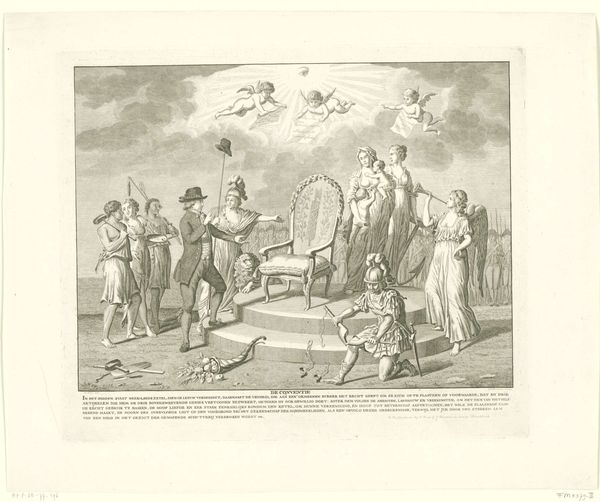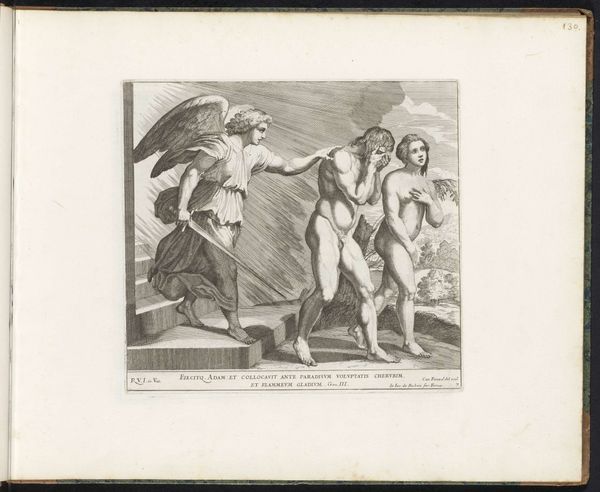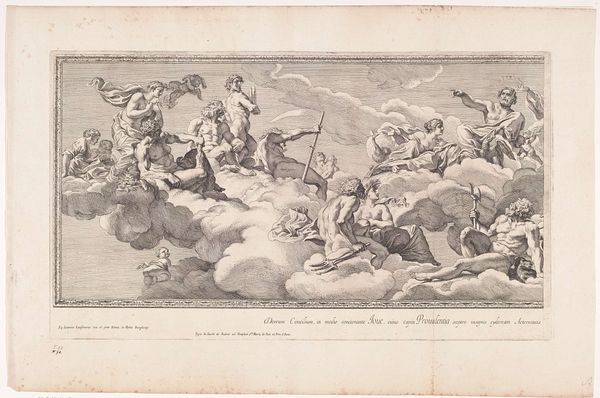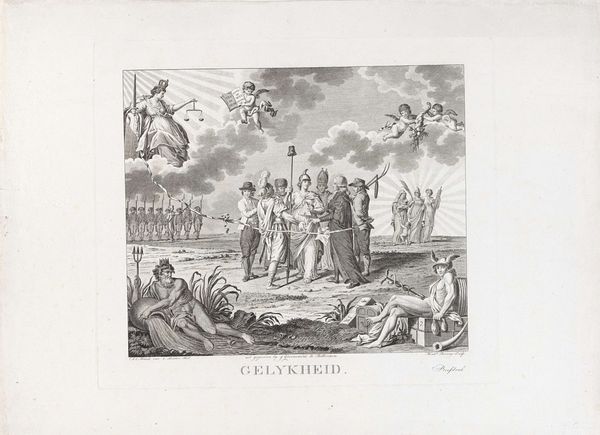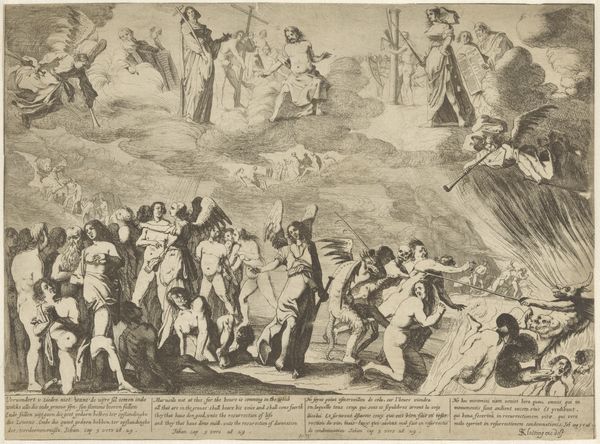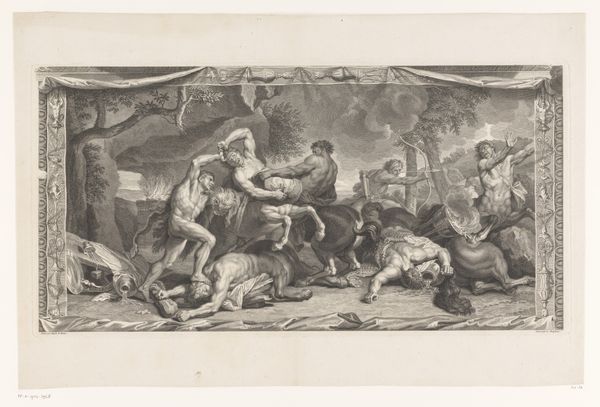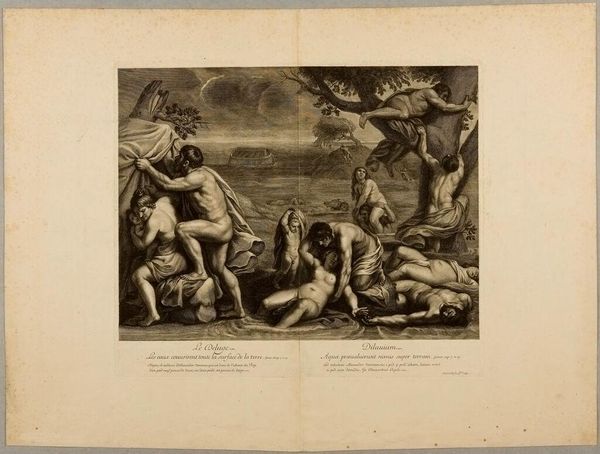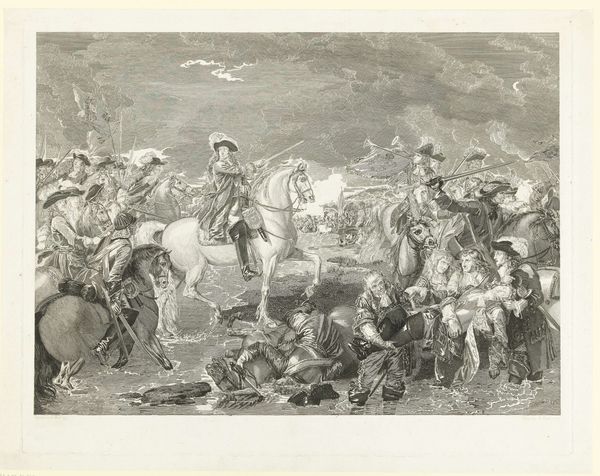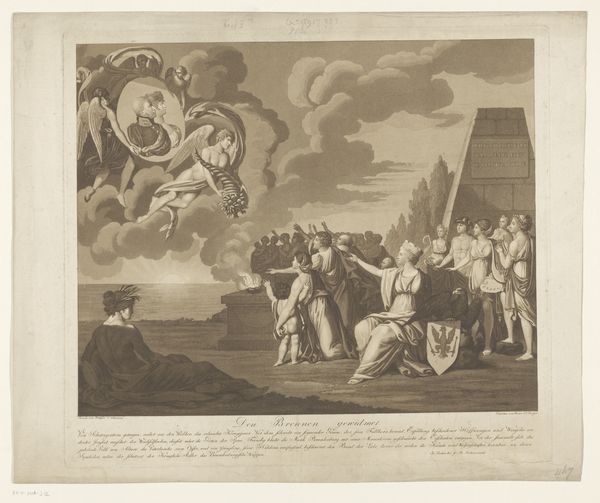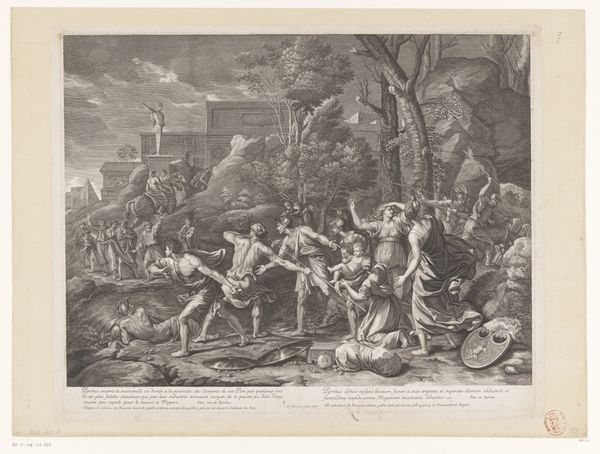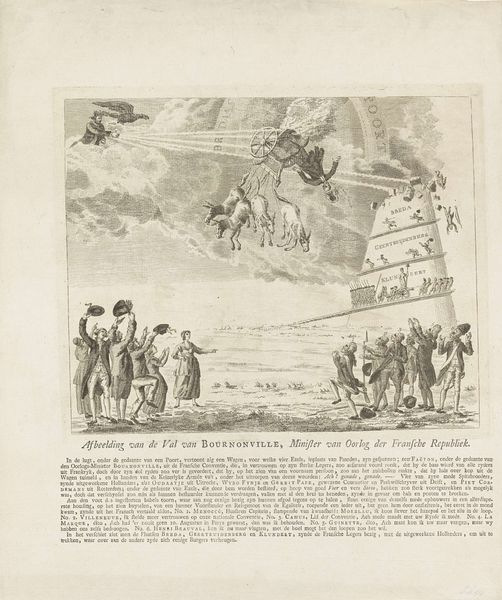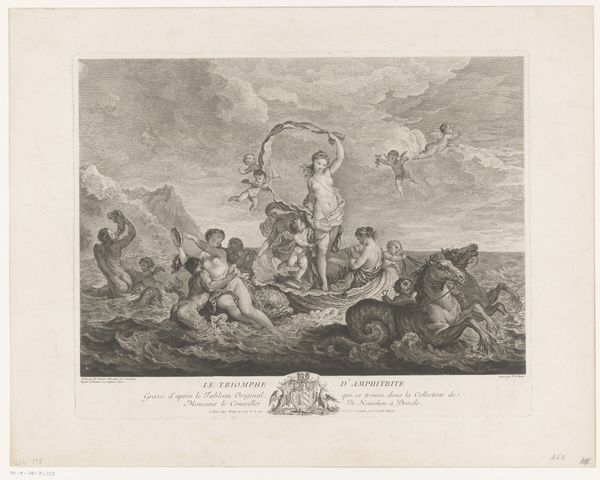
print, engraving
#
neoclacissism
#
allegory
# print
#
old engraving style
#
romanticism
#
history-painting
#
engraving
Dimensions: height 341 mm, width 405 mm
Copyright: Rijks Museum: Open Domain
Carel Frederik Bendorp created this etching, “Allegorie op de Vrijheid,” in 1795. It's a great example of how printmaking could disseminate political ideas during a revolutionary era. The etching process itself involves laborious work. A metal plate, likely copper, would have been coated with a waxy ground, upon which the design was scratched. Immersed in acid, the exposed lines would then be bitten into the metal. The plate is then inked, and the surface wiped clean, leaving ink only in the etched lines, before being pressed onto paper. Here, the sharp lines give the image a crisp, didactic quality, perfectly suited to conveying its allegorical message. The precision needed for etching aligns with the Enlightenment values of reason and order that underpin the revolutionary ideals depicted. The act of printing itself, a multiplication of the image, speaks to the widespread desire for these ideals to take hold. Consider the labor involved, not just in the artist's studio, but also in the paper mills and printing workshops. This work embodies the social and political upheaval of the time, connecting artistic creation to broader issues of labor, freedom, and the burgeoning public sphere.
Comments
No comments
Be the first to comment and join the conversation on the ultimate creative platform.
